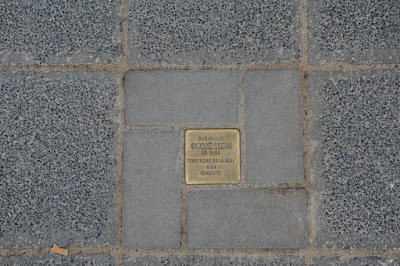












Link to Nuremberg City web page:
http://www.nuernberg.de/internet/portal_e/index.html
Explorations and experiments in visual representations - multimodality, sensory ethnography, reflexivity, autoethnographic vignettes, ethnographic photography and ba...

 Pdf copy of the page from yesterday's (7/20/10) printed edition of Frankfurter Allgemeine Zeitung. My photo is about two thirds of the way down on the right. The story is about a fieldtrip to the German Deaf Museum in Frankfurt I took my students on. Yes, dear VAOJ readers, I have been holding out on you. Of course I have been looking into the deaf scene here in Germany. Please look forward to the future post on this subject. Coming soon...
Pdf copy of the page from yesterday's (7/20/10) printed edition of Frankfurter Allgemeine Zeitung. My photo is about two thirds of the way down on the right. The story is about a fieldtrip to the German Deaf Museum in Frankfurt I took my students on. Yes, dear VAOJ readers, I have been holding out on you. Of course I have been looking into the deaf scene here in Germany. Please look forward to the future post on this subject. Coming soon...
 What does one do when one's all-day Saturday Visual Anthro seminar has been canceled (postponed) and one suddenly finds oneself with a free weekend? Go to Prague, the capital of the Czech Republic... Not that I have become bored with Germany. But transportation to Prague was cheaper than transportation to any German city I wanted to visit. So Prague it was... Prague is a tourist mecca in Europe, and filled with history. Czech beer is cheaper than bottled water. And I found Czech people to be very friendly and giving. I will be going back (as 3 days wasn't enough) - you should check it out as well.
What does one do when one's all-day Saturday Visual Anthro seminar has been canceled (postponed) and one suddenly finds oneself with a free weekend? Go to Prague, the capital of the Czech Republic... Not that I have become bored with Germany. But transportation to Prague was cheaper than transportation to any German city I wanted to visit. So Prague it was... Prague is a tourist mecca in Europe, and filled with history. Czech beer is cheaper than bottled water. And I found Czech people to be very friendly and giving. I will be going back (as 3 days wasn't enough) - you should check it out as well.










 While in Berlin I saw what I thought was the hinomaru, or Japanese flag. I assumed that this was the site of the Japanese embassy. When I walked to the actual building, and even around it once, I saw that the building was actually the Hamburger Bahnhof - Museum für Gegenwart (Museum for Contemporary Art). And next to the Japanese flag was a flag featuring a red basket. What the...?
While in Berlin I saw what I thought was the hinomaru, or Japanese flag. I assumed that this was the site of the Japanese embassy. When I walked to the actual building, and even around it once, I saw that the building was actually the Hamburger Bahnhof - Museum für Gegenwart (Museum for Contemporary Art). And next to the Japanese flag was a flag featuring a red basket. What the...? I did some investigation but couldn't find out what was going on with the flags. Finally I contacted the museum itself and they were good enough to provide the answer. It is a piece of art by Christoph Niemann. Here is a brief explanation:
I did some investigation but couldn't find out what was going on with the flags. Finally I contacted the museum itself and they were good enough to provide the answer. It is a piece of art by Christoph Niemann. Here is a brief explanation:








